
| LIST OF ANCIENT IRANIAN PEOPLE This list of ancient Iranian peoples or ancient Iranic peoples includes names of Indo-European peoples speaking Iranian languages or otherwise considered Iranian in sources from the late 1st millennium BC to the early 2nd millennium AD.
Map 1 : Distribution of Iranian peoples in 100 BC: shown is Scythia, in the north (that in a broad sense also included Sarmatia), and also Bactria, Chorasmia, Margiana, Sogdiana and Parthia matching Parthian Empire, in the south.
Map 2 : Map of the Sintashta-Petrovka culture (red), its expansion into the Andronovo culture (orange) during the 2nd millennium BC, showing the overlap with the Bactria–Margiana Archaeological Complex (chartreuse green) in the south and also with the Afanasievo culture in the east. The location of the earliest chariots is shown in magenta. Several scholars associate Proto-Indo-Iranians with Sintashta-Petrovka culture. These scholars also may associate some mentions in the Avesta (sacred scriptures of Zoroastrianism), like the AiryanAm Vaejo - "Aryans' Expanse", as distant memories that were retained by oral tradition of this old land of origin. There are also mentions of Aryavart - "Aryans Abode" (in sacred Hindu scriptures such as Dharmashastras and Sutras), the Hindu counterpart of Airyanam Vaejo, although it refers to Northern India and they are later.
Map 3 : The extent of the Bactria-Margiana Archaeological Complex (BMAC), according to the Encyclopedia of Indo-European Culture. The BMAC culture and peoples influenced migrating Indo-Iranians that came from the north
Background
:
Iranian peoples first appear in Assyrian records in the 9th century BCE. In Classical Antiquity, they were found primarily in Scythia (in Central Asia, Eastern Europe, the Balkans and the Northern Caucasus) and Persia (in Western Asia). They divided into "Western" and "Eastern" branches from an early period, roughly corresponding to the territories of Persia and Scythia, respectively. By the 1st millennium BCE, Medes, Persians, Bactrians and Parthians populated the Iranian plateau, while others such as the Scythians, Sarmatians, Cimmerians and Alans populated the steppes north of the Black Sea and the Caspian Sea, as far as the Great Hungarian Plain in the west. The Saka tribes remained mainly in the far-east, eventually spreading as far east as the Ordos Desert (North-Central China).
Ancient Iranian peoples spoke languages that were the ancestors of modern Iranian languages, these languages form a sub-branch of the Indo-Iranian sub-family, which is a branch of the family of the wider Indo-European languages.
Ancient Iranian peoples lived in many regions and, at about 200 BC, they had as farthest geographical points dwelt by them: to the west the Great Hungarian Plain (Alföld), east of the Danube river (where they formed an enclave of Iranian peoples), Ponto-Caspian steppe in today's southern Ukraine, Russia and far western Kazakhstan, and to the east the Altay Mountains western and northwestern foothills and slopes and also western Gansu, Ordos Desert, and western Inner Mongolia, in northwestern China, to the north southern West Siberia and southern Ural Mountains (Riphean Mountains) and to the south the northern coasts of the Persian Gulf and the Arabian Sea. The geographical area dwelt by ancient Iranian peoples was therefore vast (at the end of the 1st Millennium BC they dwelt in an area of several million square kilometers or miles thus roughly corresponding to half or slightly less than half of the geographical area that all Indo-European peoples dwelt in Eurasia).
During Late Antiquity, in a process that lasted until Middle Age, the Iranian populations of Scythia and Sarmatia, in the western (Ponto-Caspian) and central (Kazakh) Eurasian Steppe and most of Central Asia (that once formed a large geographic area dwelt by Iranian peoples), started to be conquered by other non-Iranian peoples and began to be marginalized, assimilated or expelled mainly as result of the Turkic peoples conquests and migrations that resulted in the Turkification of the remaining Iranian ethnic groups in Central Asia and the western Eurasian steppe (by the Xiongnu, the Huns and Hunnic Empire, Göktürks and Göktürk Empire, Oghuz Turks, etc). Germanic (Goths), Slavic (like the Kievan Rus) and later Mongolian (Mongol Empire) conquests and migrations also contributed to the decline of the Iranian peoples in these regions. By the 10th century, the Eastern Iranian languages were no longer spoken in many of the territories they were once spoken, with the exception of Pashto in Central Asia, Ossetic in the Northern Caucasus and Pamiri languages in Badakhshan. Most of Central Asia and the western Eurasian steppe was almost completely Turkified. However, in most of the southern regions, corresponding to the Iranian Plateau and mountains, more densely populated, Iranian peoples continued to be most of the population and remained so until modern times.
Various Persian empires flourished throughout Antiquity, however, they fell to the Islamic conquest in the 7th century, although other Persian formed again later.
Ancient
Iranian Peoples :
Mentioned
in the Avesta :
•
Airyas
•
Dahis (possible ancestors of the Dahae or Dasa)
•
Sainus
•
Sairimas
• Tuiryas
•
Turanians
- an ancient Iranian ethnic group, their land was called Turan,
a word that later was applied to the lands north of Iran and the
Iranian Plateau and mountains, i.e. all Central Asia (including
Transoxiana).
(in the Avesta "Turan" had the meaning of an Iranian tribe,
only later the name had the meaning of lands inhabited by Turkic
tribes).
• Yashtians
East
Iranians :
Northeast
Iranians (Northern East Iranians)
:
Map 4 : Scythia in the VII–III cen. BC (1995)
Map 5 : Asia in 323 BC, showing several Iranian peoples located in Central Asia and Europe
Map 6 : Scythian cultures of Scythian, Sarmatians and Saka Iranian peoples located in the Western Eurasian steppe (Central Asia and Europe) from ca. 900 BC - 200 AD
Map 7 : Dahae tribal confederation
Map 8 : Roxolani, Siraces and Aorsi in the 4th century BC
Map 9 : Alan migrations in the context of the Migration Period
Map 10 : Iazyges in AD 125 west of Roman Dacia, in the Eastern Pannonian Plain, today's Alföld, the Eastern Hungarian Plain • Saka / Sacans (Saka) / Scytho-Sarmatians - Sarmatians and Scythians, Scythian cultures peoples of the Western (or Ponto-Caspian steppe), Central (or Kazakh steppe) Eurasian steppe and Central Asia that spoke several Scytho-Sarmatian Iranian languages and had a kin and similar culture. The name Saka was an Old Persian generic word for all Iranian speaking peoples, Scythians, Sarmatians and others, that lived in the Eurasian Steppe and were nomad or semi nomadic pastoralists / herders)
• Western Saka (Western Scytho-Sarmatians) (Scythians in a narrow sense - the Scythian culture peoples that lived in the Ponto-Caspian steppe, the west part of the Eurasian Steppe)
• Scythians / Scoloti (Skolotoí / Saka) (Saka para Draya - "Sakas Beyond the Sea" - The Sea was the Pontus Euxinus / Black Sea) (the Old Persian word "Saka" covered both Scythians and Sarmatians)
• Achaei (Acae)
• Arpoxaians-Colaxaians-Lipoxaians
• Arpoxaians (descendants of Arpoxais, possible eponym)
• Catiari / Katiaroi
• Colaxaians (descendants of Colaxais, possible eponym)
• Paralatae / Royal Scythians
• Spalaei / Spali / Palaei / Pali
• Lipoxaians (descendants of Lipoxais, possible eponym)
• Auchetae / Euchatae
• Asampatae
• Scythia Minor Scythians (a small tribal group of Scythians that took refuge in Scythia Minor - roughly some areas of today's Dobrogea) • Tauri Scythae / Tauroscythae, Tauri Scythians or Scythianized Tauri, they lived in the plains of Northern Taurica or Tauris Peninsula (today called Crimea)
• Eastern Saka (Eastern Scytho-Sarmatians) (Scythians in the broad sense of Scythian culture peoples) (in a narrow sense, Eastern Saka refers to the Iranian nomadic or seminomadic pastoralist peoples that lived in the central part of the Eurasian steppe or Kazakh steppe and Central Asia, they were called "Sarmatians" by the Greeks and "Saka" by the Persians) (the Old Persian word "Saka" covered both Scythians and Sarmatians)
• Central Asian Sakas / Central Asia Scytho-Sarmatians
• Core Central Asian Sakas / Core Central Asian Scytho-Sarmatians
• Amyrgians (Saka haumavarga - Soma Drinkers/Gatherers Sakas) (Saka para Sugudam - Sakas Beyond Sogdiana, may have been the same as the Saka haumavarga i.e. the Amyrgians, the Greek name for the same people) (roughly in today's Ferghana Valley and basin, parts of Uzbekistan, Tadjikistan and Kyrghyzstan)
• Anaraci
• Dahae / Dahas / Das
• Parni
/ Aparni (tribe where Arsaces
I became chief, later he became the first king of Parthia,
he was the founder of the Arsacid Dynasty, that ruled the Parthian
Empire; several ancient authors said he was of Scythian or Bactrian
origin)
• Amardians / Mardians (initially they lived in Southwest Central Asia, however they migrated southwest towards central Alborz Mountains and plains of southern Caspian Sea coast and later they became assimilated into Northwestern Iranians subgroup of Western Iranians)
• Tapurians / Tapuri / Tapuraei (initially they lived in Southwest Central Asia, however they migrated southwest toward Tapuria, in the east Alborz Mountains and plains of the southeastern Caspian Sea coast, and later they became assimilated into Northwestern Iranians subgroup of Western Iranians) (origin of the name Tapuristan or Tabaristan, the land where they went living)
• Massagetae / Orthocorybantians (Saka tigraxauda - Pointy Hoods / Pointed Hats Sakas or Scythians) (Massagetae and Saka Tigraxauda or Orthocorybantians, as they were known by the Greeks, may have been different names for the same people)
• Apasiacae
• Norossi
• Sakas (in a modern narrow sense the northernmost and easternmost Scytho-Sarmatians, including those who lived in the Tarim Basin, where Tocharians also dwelt)
• Scytho-Siberians (in southern West Siberia and northern Kazakhstan, in the upper Irtysh, Ishim, Tobol and Ob' river courses regions)
• Abii
/ Gabii
• Sacaralae (Eastern Central Asia Saka) (roughly in today's central and eastern Kazakhstan) - they lived in the Chu and Sarysu river basins and their desert areas, and in the Ili river and Lake Balkash basin and most part of the Tian Shan mountains northern slope (also known as Tengri Tagh or Tengir-Too mountains).
• Tarim Basin Sakas (mainly in the western and southern regions)
• Gumo Sakas / Tumshuq Sakas (they lived
in today's Tumshuq region and city) (they spoke Tumshuqese or Tumshuqese
Saka, a Northeast
Iranian language or dialect)
• Indo-Scythians / Indo-Sakas (a group of Sakas that migrated towards East Iranian Plateau, Indus valley and India)
• Sarmatians Proper / Sauromatae
• Aorsi - Alans (two closely related Sarmatian tribes or the same tribe known by different names)
• Aorsi (they lived northeast of the Siraces) (Yancai or Yentsai was the Chinese name of a State that could be identical with an Aorsi one)
• Lower Aorsi (Western Aorsi)
• Alans (a closely related people or tribe with the Aorsi Sarmatians or the same people known by two different names) (Aryan > *Alyan > Alan) (Ossetians / Irættæ are a modern branch) (also called "Melanchlaeni" - "Black-Cloaks", not to be confused with other two peoples called by that same name that were: the "Melanchlaeni" - "Black-Cloaks" of Pontus, and the "Melanchlaeni" - "Black-Cloaks" of the far north)
• Iasi
(Iasi / Jassi
/ Jasz are descendants from a group of Alans that migrated westward,
they are related but not identical to the oldest Iazyges)
•
Banat Roxolani (a branch of the Roxolani that migrated westward)
• Cissianti
Southeast Iranians (Southern East Iranians) :
Map 11 : Persian Empire in Achaemenid era, 6th century BC, showing names of ancient Iranian peoples in the Iranian Plateau and southern Central Asia on the right side of the map
Map 12 : Ancient regions of Iranian Plateau and part of South Central Asia showing ancient Iranian peoples and tribes; this map also shows ancient peoples of the Indus Valley in Northwest Ancient India
• Eoritae
• Borgi
•
Ariaspae / Evergetae
• Chomari
• Chorasmians
/ Khwarezmians
•
Aparytae
• Margians
• Drachamae
• Mycae
•
Sogdians
- the people that lived in Sogdiana, possible ancestors of the Yaghnobis
(Kangju –
Chinese name of a State probably identical to the Sogdians)
• Arizanti
• Parthians
• Nisaei (in the region of Nisa,
first capital of the Parthians,
Parthia)
• Vitii
Southwest Iranians (Southern West Iranians) :
• Arae
• Proto-Persians (Parsua / Parsumash)
•
Persians
•
Utians
• Nezak
Huns
• Alchon
Huns / Alchono Huns
• White Huns (Spet Xyon / Sveta Huna) (White = Western)
• Hephthalites / Uar (Ebodalo)
• Xionites / Chionites / Chionitae
Iranians mixed with other non-Iranian peoples :
• Gelonians / Geloni (Helonians / Heloni), people of partially Greek and partially Scythian descent
Northwest Caucasian-Iranian :
• Maeotians, a group of peoples that dwelt in the Maeotian Lake (Azov Sea) and Palus Maeotis (Don river delta swamps) that may have been Cimmerians, Iranian people (Scythians), West Caucasian people (Circassians / Adyghe) with an Iranian overlordship or a mixture of Iranian and West Caucasian peoples
•
Agri
Slavic-Iranian :
Thracian-Iranian :
• Cimmerians, they could have been a people of Thracian - Dacian origin with an Iranian overlordship, a mixture of Thracians and Iranians or a missing link between Indo-Iranian peoples and Thracians and Dacians
Mixed peoples that had some Iranian component :
• Bastarnae, an ancient people who between 200 BC and 300 AD inhabited the region between the Carpathian Mountains and the river Dnieper, to the north and east of ancient Dacia - one possible origin of the name is from Avestan and Old Persian cognate bast- "bound, tied; slave" (cf. Ossetic bætten "bind", bast "bound") and Proto-Iranian *arna- "offspring")
•
Atmoni / Atmoli
Possible Iranian or Non-Iranian peoples :
• Cappadocians or Leucosyri (White Syrians) (a possible Anatolian Indo-European people and not an Iranian one)
Iranian or Germanic :
• Taifals (Taifali / Taifalae)
Iranian or Indo-Aryan :
• Dadicae
/ Daradai / Daradas (Darada > Darda > Dard?) (may have
been possible ancestors of the Dards,
an Indo-Aryan
people, and not an Iranian one), they dwelt in the region of the
upper course of the Indus, in modern Khyber
Pakhtunkhwa, Gilgit
area of the modern Gilgit-Baltistan,
both in Pakistan and also in Kashmir
Valley and Chenab Valley in India (where modern Dards still
dwell)
Iranian or Nuristani :
• Kambojs / Komedes / Kapisi / Rishiks / Tambyzoi / Ambautae - a people that lived in a country called Kumud, probably in what is now part of Afghanistan. There are different views among scholars about their ethnic and linguistic kinship. According to some they are possible ancestors of Pamir peoples in the Pamir Mountains, roughly Badakhshan region of Tajikistan and Afghanistan and parts of the Hindu Kush or Paropamisus in east central Afghanistan and northwestern Pakistan) According to other scholars they were an old transitional people between Iranian and Indo-Aryan peoples and as such they may have been the ancestors of the Nuristani people (until the end of the 19th century they were known as Kafirs because they were not Muslims, and practiced an ancient Indo-Iranian religion like today the Kalash people). In Antiquity, one of the regions that they dwelt was in the southern and eastern slopes of the Paropamisus Mountains (today's Hindu Kush in east central Afghanistan and northwestern Pakistan)
•
Ambautae
• Cabolitae, in the region of Kabul
(today's capital of Afghanistan), part of the old Kingdom
of Kapisa
• Western Kambojas (spread and scattered
in Sindhu,
Saurashtra,
Malwa, Rajasthan,
Punjab and Shursen)
• Param Kambojs, Kumud or Komedes, of the Alay Valley or Alay Mountains, north of Hindukush / Paropamisus in today's far southern Kyrgyzstan and far northern Tajikistan. They formed the Param Kamboj Kingdom. In ancient Sanskrit texts, their territory was known as Kumuddvip and it formed the southern tip of the Shakdvip or Scythia. In classical literature, this people are known as Komedes. Indian epic Mahabharat designates them as Param Kambojs
• Rishiks,
some historians believe the Rishiks were a part of, or synonymous
with, the Kambojs. However, there are other theories regarding their
origins
Iranian or Slavs :
•
Arichi
Iranian or Tocharian :
•
Argippaei
• Asii / Asioi / Osii, an ancient Indo-European
people of Central
Asia, during the 2nd and 1st Centuries BCE, known only from
Classical Greek and Roman sources
• Gushi or Jushi or Gushineans (an obscure ancient people that lived in two regions: in the Turpan Basin, i.e. Chinese Jushi or Gushi, including Khocho or Qoco, known in Chinese as Gaochang; and also in a large northern region, roughly in many parts of the region later known as Dzungaria, south of the Altay Mountains; they were the basis of the Gushi or Jushi Kingdom. They spoke a language that eventually diverged into two dialects, as noted by diplomats from the Han empire) (they may have been one of the peoples misnamed "Tocharians", speakers of Tocharian A?) (there are different views among scholars about their ethnic and linguistic kinship)
•
Nearer Gushi / Anterior Gushi, in the Turpan
Basin
• Yuezhi / Gara? (an ancient Indo-European speaking people, in the western areas of the modern Chinese province of Gansu, during the 1st millennium BC, or in Dunhong, in the Tian Shan, later they migrated westward and southward into south Central Asia, in contact and conflict with the Sogdians and Bactrians, and they possibly were the people called by the name Tocharians or Tukhar, which was possibly an Iranian speaking people not to be confused with another people misnamed or not as "Tocharians") (according to the Iranian historian Jahanshah Derakhshani the Kochi or Kuchi people, a group of nomadic Ghilji or Ghilzai Pakhtun, are descendants from the Yuezhi that were assimilated into the Pakhtun, the name derives from Guci, formerly Chinese: pinyin: Yuèzhi)
• Greater-Yuezhi (Tu Gara) (Dà Yuèzhi ) (Tu Gara > Tu Kara? > Tu Khara?) Possibly the Iranian Tocharians (not to be confused with the peoples called "Tocharians" in a misnomer) (possibly they were the ancestors of the Kushans)
• Tushars (Tukhars), could have been identical with the Greater-Yuezhi, the greater part of Yuezhi, are the people that migrated from western Gansu and after from the Ili Valley, migrated southward and settled in Tukhara, another name for Bactria after the invasion of the Iranian Tocharians that came from the north and northeast (not to be confused with the peoples mistakenly called "Tocharians" which were of another Indo-European branch of peoples)
• Kushans (Chinese: pinyin: Guìshuang), they were the basis of the Kushan Empire)
• Lesser-Yuezhi (Xiao Yuèzhi)
Iranian, Tocharian or Turkic :
Iranian or Turkic :
Source :
https://en.wikipedia.org/wiki/ |
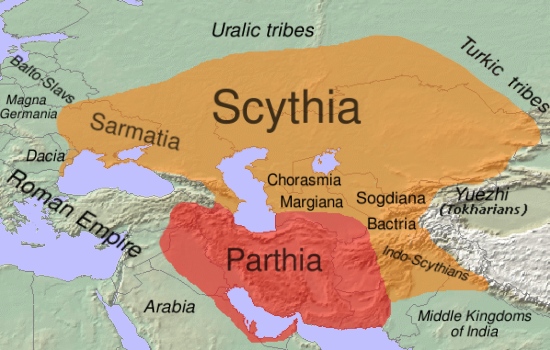
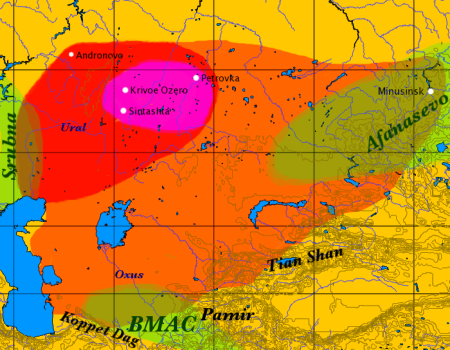

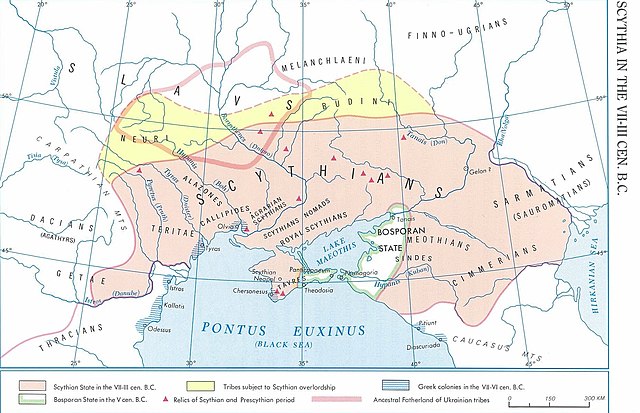
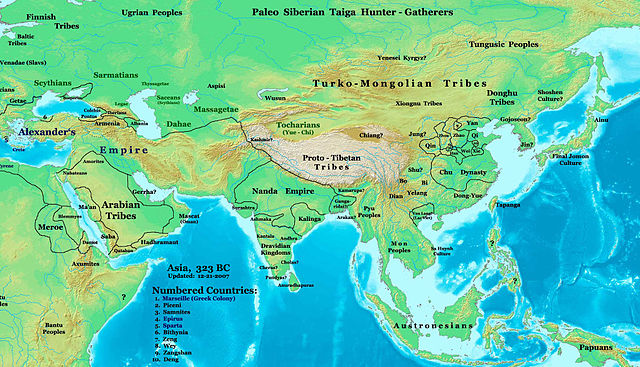
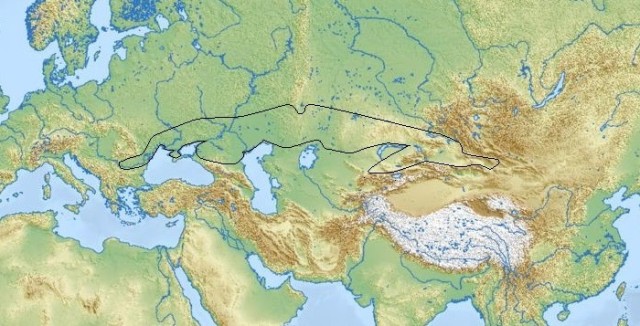

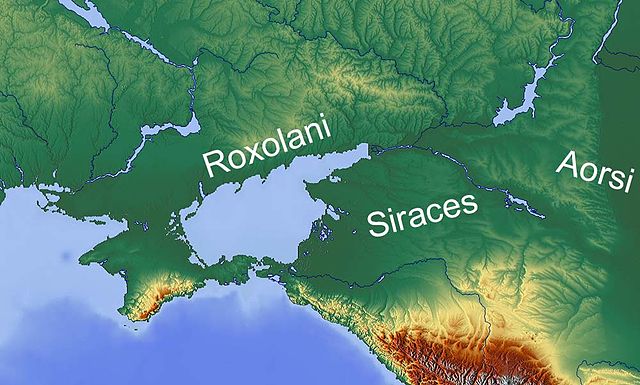
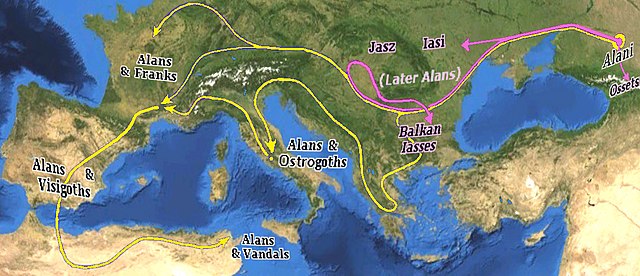
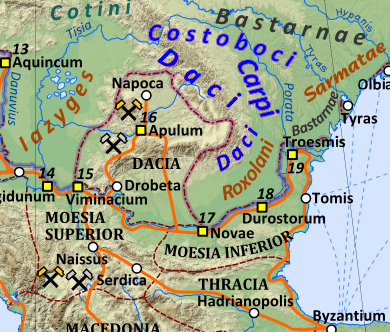
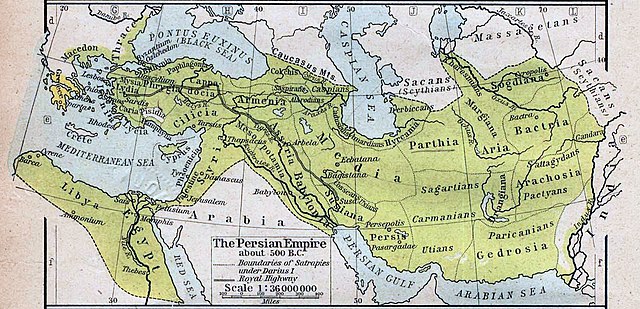
.jpg)